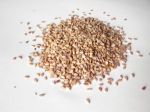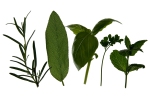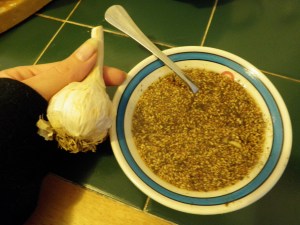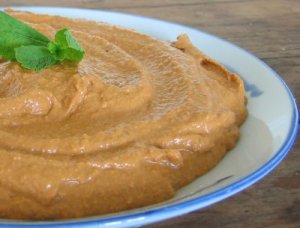
The Zatar Burger is born, and just in time for Memorial Day Weekend! The bright dipping sauce is a mix of hummus, ketchup, a splash of mustard, and a generic (but good) Arabic spice blend. Thin out the sauce with water if you need to.
Sometimes nothing’s better than a burger. While I love my salads dearly and mainly eat a plant-based diet, sometimes a good old-fashioned wallop of protein is the only way for me to go. I blame my Type O blood for the periodic protein craving. Oh, and coming from a long line of people who know their way around kebabs, burgers, and all manner of meats certainly doesn’t help either. 😉

I'm feeling festive lately. Mainly because a holiday weekend looms. (I get the actual holiday off this time, which is great). But the festive feeling might also stem from the fact that I was a "fit model" this week for my friend Denise's bridesmaid dress shopping expedition. As one of her bridesmaids, I might get to wear this lovely number to her wedding in March.
With Memorial Day around the corner, I figured it’d be timely and tasty to offer up a creative burger option.
Burgers are fun because you’re only limited by your imagination as to how you can pump them full of flavor. Just make sure to buy the best organic, humanely raised, grass-fed meat you can afford, to ensure your burgers aren’t pumped full of hormones as well.
Recently, I was in the mood for a creative burger with a Middle Eastern flavor. Okay, I know some of you are thinking, “Why not just make kebab? Duh!” Point taken, but I wanted something that was more East Meets West. Plus, I wanted to enjoy that decadent brioche roll/burger bun that was lurking in my freezer! Dear Lord how I love a good brioche, or a challah bread for that matter. Siiiiggghhhhh. . .
So I tossed together some organic bison meat (it’s leaner than beef), some steak seasoning, some zatar (more on that later), olive bits, sundried tomato bits, fresh grated onion and grated garlic. Then I bound everything with a splash of ketchup and Worchestshire and voila! The Zatar Burger was born! A juicy, flavorful, and creative burger that almost didn’t need the brioche bun to taste perfect. Oh, and for the record, I photographed this burger on a multi-grain bun because it (surprisingly!) looked much nicer than the brioche. Which was moot, because the brioche was long gone by the time I got around to photographing this recipe anyways, but I digress.
Onward to zatar. What is it? I blogged about it here, but a quickie explanation for now is that it’s an aromatic herb and sesame seed blend popular in many Middle Eastern countries. Sesame seeds and dried, milled herbs form this versatile powdery substance. Some of the traditional ways of serving it are on breads or as a dip when you soak some in olive oil.
I like to think outside of the traditional methods, and often use it in salads, sprinkled onto veggies of all sorts, and of course, in today’s burger. Don’t have zatar on hand? No problem; an equal amount of herbs de Provence will do. Don’t have that either? Sprinkle in some oregano, dried thyme, and sesame seeds to approximate that fantastic zatar taste.
Zatar Burgers
Ingredients:
1 pound lean ground meat (beef, lamb, bison, or a blend of all three or any two)
1 medium onion
1 large clove of garlic
3 Tablespoons Zatar blend of choice OR 3 Tablespoons herbs de Provence plus 1 teaspoon sesame seeds OR 1 Tablespoon each of thyme, oregano, and sesame seeds.
2 Tablespoons grill seasoning of choice (more if needed)
1 scant teaspoon cumin powder
2 Tablespoons ketchup
1 Tablespoon Worcestershire sauce (optional)
1-2 Tablespoons sundried tomato bits
1-2 Tablespoons olives pieces (no pits, of course!)
4 burger buns or rolls of choice
Salad mix of choice
Hummus ketchup (see note at bottom of recipe)
Directions:
1. To prep burgers, grate half of onion and garlic into a bowl. (Cut the rest of the onion into slices to grill alongside burgers) Add in all spices, including zatar and stir. Then add in wet ingredients (ketchup and optional Worcestershire sauce) and stir again. Finally, add in olive and sundried tomato bits, and mix well.
2. Add in ground meat, and mix gently with hands to incorporate spice paste mix into meat. Don’t overwork. Form into four equal size patties, and grill on indoor or outdoor grill of choice until desire doneness is reached. When you flip the burgers, add the onion chunks to the grill to cook.
3. Arrange burgers in desired manner–on buns, atop a salad, or even wrapped in pita or lavash bread. If desired, serve with burger fixing of your choice. My preference is to serve them with slabs of grilled onion and hummus ketchup (recipe in note below).
NOTE: Optional Flexible Hummus Ketchup: Use a fork to mix together equal amounts premade hummus and ketchup in a small bowl. Add in a splash (teaspoon) of mustard, and a tablespoon of any Arabic spice blend. If you want a redder dip, add in some paprika or increase the amount of ketchup. If dip tastes too sweet, balance the flavor with some lemon or lime juice. Mix well and serve with burgers as a dipping sauce. For a garlicky kick, grate in some garlic. If a spicier flavor is desired, add a pinch or two of cayenne pepper.












